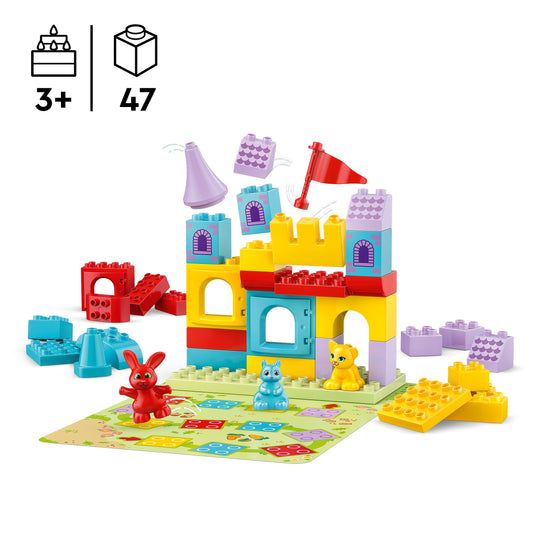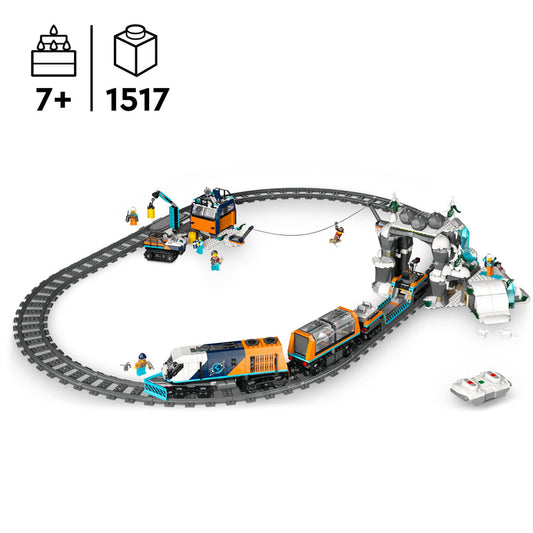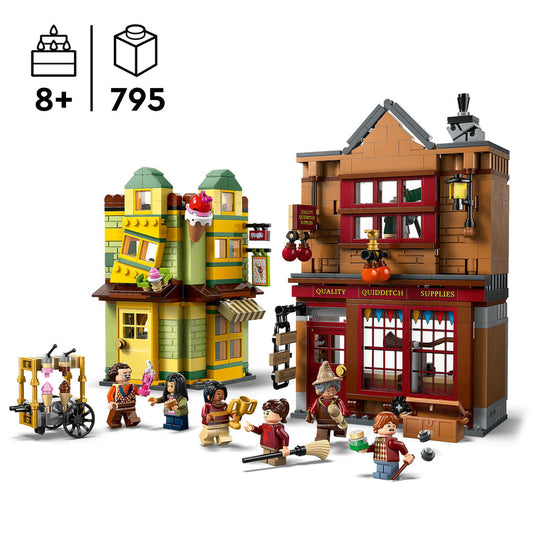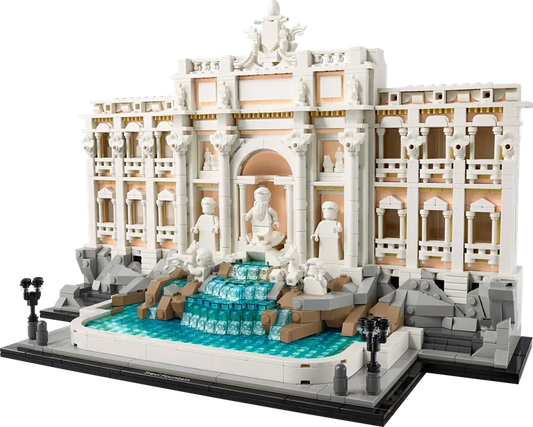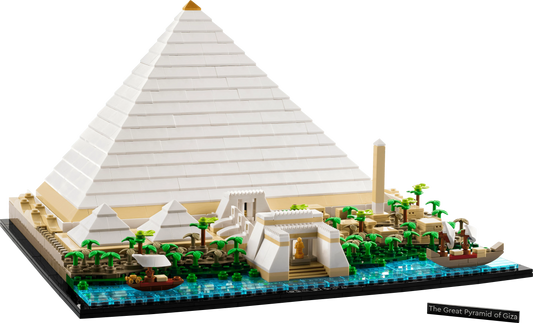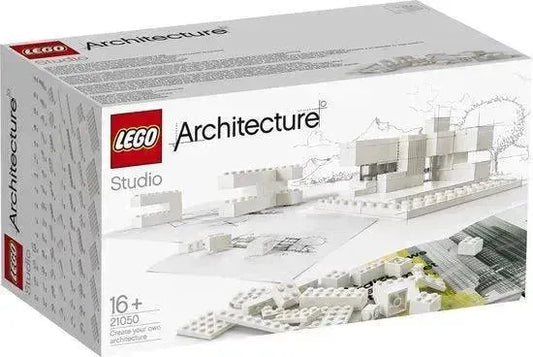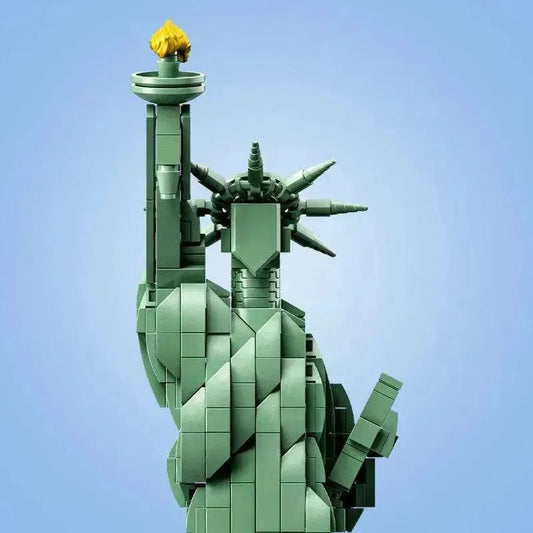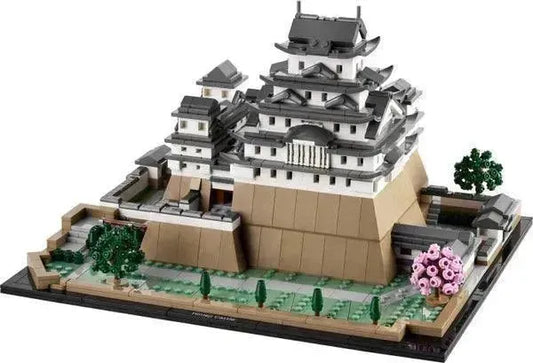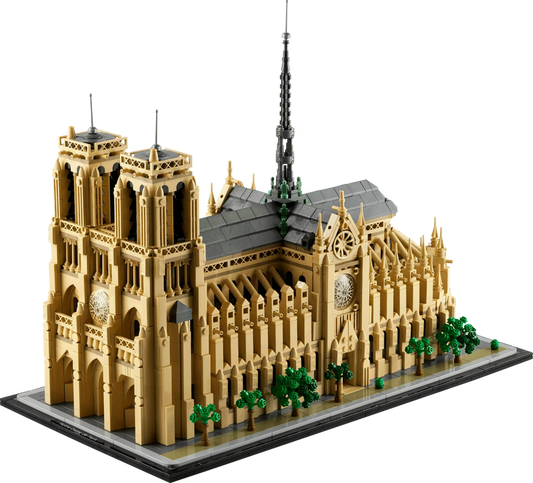The history of LEGO City
The LEGO® Group goes all the way back to its beginnings in 1932 and has created products that reflect the everyday lives of children. One of the themes that has been giving children realistic and easily recognizable toys for decades is LEGO® City.
The LEGO City Map

Due to the economic growth of the 1950s, many Danes can afford a car. With an increasing number of cars on the street, more and more attention is being paid to teaching children how to behave in traffic. With this in mind, the LEGO Group launched the City Plan in 1955 to complement the LEGO System in Play products. The city map is a thin piece of plastic cloth (later followed by a masonite version) with a stylized network of streets on which children can arrange their LEGO buildings and cars to create an urban environment. The city plan was created in collaboration with the 1950s equivalent of the current Danish Road Safety Council and can be supplemented with LEGO street signs, small plastic cars and trucks and miniature police officers to direct traffic.
Economic growth also means that Denmark is becoming increasingly industrialized and that Danish cities are growing as people move from rural to urban environments. Since its inception in 1932, the LEGO Group has produced products that reflect the surrounding society. Inspired by economic growth and the focus on road safety, the company emphasizes creating products with an urban setting. The buildings and cars produced from the mid-1950s onwards, together with the city plan, provide a very early inspiration for what is now the current LEGO City theme.
In 2008, the LEGO Group celebrated the 50th anniversary of the LEGO® brick with a new version of an old LEGO Town Plan set. Like the original, the front featured third-generation LEGO owner Kjeld Kirk Kristiansen
Differentiating the system
In the 1960s and 1970s, many products launched by the LEGO Group had an urban theme. In 1978, Kjeld Kirk Kristiansen, owner of the third generation of LEGO, introduced a new business model called the "System within the System". With the new model, the LEGO Group begins to further differentiate products and introduces LEGO play themes as we know them for the first time.
Yellow LEGO Fire Station LEGOLAND® Town set from 1978

Reflecting the LEGO Group's focus on urban environments, LEGOLAND Town was one of the first LEGO play themes introduced in 1978. The theme is inspired by the LEGO System in Play products from 1955 and in particular the City Plan. LEGOLAND Town introduces, among other things, a renewed City Plan in the form of new street construction plates. The new plates have roads printed on them and studs incorporated into them, making it possible to build houses directly on the plates to create a true urban LEGO environment that is deeply rooted in the LEGO system.
In 1991, the name LEGOLAND disappeared and the play theme was renamed LEGO Town. In 1999 the name changed back to LEGO City, which remained the name except for a brief period in 2003-2004 when the theme was known as LEGO World City. Since its launch in 1978, the Town theme introduced instant classics such as police and fire stations. Over the years the town grew into a city and many more sub-themes emerged - including airport, Arctic, coast guard, port, mining, etc.
LEGO City Police Station LEGO® City Police Station from 2014
 With the spirit of the theme dating back to the mid-1950s, it's easy to see why the LEGO City theme is an established core LEGO product.
With the spirit of the theme dating back to the mid-1950s, it's easy to see why the LEGO City theme is an established core LEGO product.-

Find your flow with the LEGO Group's two new Paris-inspired icons
READ MORE -

Build your own LEGO Halloween Vampire... if you dare
READ MORE -

The history of LEGO City... perhaps the nicest LEGO sets there are
READ MORE -

The top 8 most anticipated sights
READ MORE -
LEGO DUPLO for young children: hours of fun!
READ MORE -

Top tips for making a LEGO Christmas star yourself.
READ MORE -

Are LEGO safe toys?
READ MORE -

How is LEGO tested for safety?
READ MORE -
LEGO Jurassic World Dino
READ MORE
LATEST LEGO SETS
-
LEGO 3-in-1 dieren op wielen 10448 DUPLO
Regular price €29,99 EURRegular price€34,99 EURSale price €29,99 EURSale -
LEGO Hopsy's kasteelspel 10450 DUPLO
Regular price €33,99 EURRegular price€39,99 EURSale price €33,99 EURSale -
LEGO McQueens bezoek aan Docs garage 10456 DUPLO
Regular price €25,99 EURRegular price€29,99 EURSale price €25,99 EURSale -
LEGO De tuin en kas van Opa Big 10461 Peppa Pig
Regular price €67,99 EURRegular price€79,99 EURSale price €67,99 EURSale -
LEGO Minnie's huisdierenhotel 43274 Disney
Regular price €33,99 EURRegular price -
LEGO Centraal Station 60469 City
Regular price €76,99 EURRegular price -
LEGO Arctic Explorer Polar Express Trein 60470 City
Regular price €169,99 EURRegular price -
LEGO Nachtmerrie haaienonderzeeër 71500 Dreamzzz
Regular price €125,99 EURRegular price -
LEGO Arins Spinjitzu strijdmecha 71839 Ninjago
Regular price €17,99 EURRegular price -
LEGO Rontu de Meesterdraak 71842 Ninjago
Regular price €39,99 EURRegular price -
LEGO Ninja strijdvoertuig 71844 Ninjago
Regular price €76,99 EURRegular price -
LEGO De vuurriddermecha 71846 Ninjago (Pre-Order: juni)
Regular price €101,99 EURRegular price -
LEGO Plo Koons Jedi Starfighter™ microfighter 75400 StarWars
Regular price €12,74 EURRegular price€14,99 EURSale price €12,74 EURSale -
LEGO 77241 (Pre-Order: March 2025)
Regular price €25,99 EURRegular price -
LEGO 77241 (Pre-Order: March 2025)
Regular price €42,99 EURRegular price -
LEGO 77241 (Pre-Order: March 2025)
Regular price €84,99 EURRegular price -
LEGO 77241 (Pre-Order: March 2025)
Regular price €224,99 EURRegular price -
LEGO Formula 1 Drivers with their Car 71049 Minifigures (Set 12 Pieces)
Regular price €54,99 EURRegular price -
LEGO Formula 1 Drivers with their Car 71049 Minifigures (Set 12 Pieces)
Regular price €4,49 EURRegular price -
LEGO Formula 1 Drivers with their Car 71049 Minifigures (Set 12 Pieces)
Regular price €4,49 EURRegular price -
LEGO Formula 1 Drivers with their Car 71049 Minifigures (Set 12 Pieces)
Regular price €4,49 EURRegular price -
LEGO Formula 1 Drivers with their Car 71049 Minifigures (Set 12 Pieces)
Regular price €4,49 EURRegular price -
LEGO Formula 1 Drivers with their Car 71049 Minifigures (Set 12 Pieces)
Regular price €4,49 EURRegular price -
LEGO Formula 1 Drivers with their Car 71049 Minifigures (Set 12 Pieces)
Regular price €4,49 EURRegular price -
LEGO 77241 (Pre-Order: March 2025)
Regular price €84,99 EURRegular price€99,99 EURSale price €84,99 EURSale
SELECTED FOR YOU
-
LEGO 21062 (Pre-Order: March 2025)
Regular price €135,99 EURRegular price -
LEGO Pyramid of Giza 21058 Architecture
Regular price €118,99 EURRegular price -
LEGO Build your own Architecture buildings with this set Studio 21050 Architecture
Regular price €449,99 EURRegular price -
LEGO Statue of Liberty 21042 Architecture
Regular price €84,99 EURRegular price -
LEGO Trafalgar Square London 21045 Architecture
Regular price €99,99 EURRegular price -
LEGO Himeji Castle 21060 Architecture
Regular price €135,99 EURRegular price -
LEGO Notre-Dame Cathedral 21061 Architecture
Regular price €195,99 EURRegular price
-

LEGO Avatar
LEGO Avatar: Dive into the wonderful world of Pandora! Build with Jake...
-

LEGO Icons
Relive your childhood with LEGO Icons sets, specially designed for nostalgic adults....
-

LEGO Classic
Discover endless building fun with LEGO Classic sets! This collection offers a...










